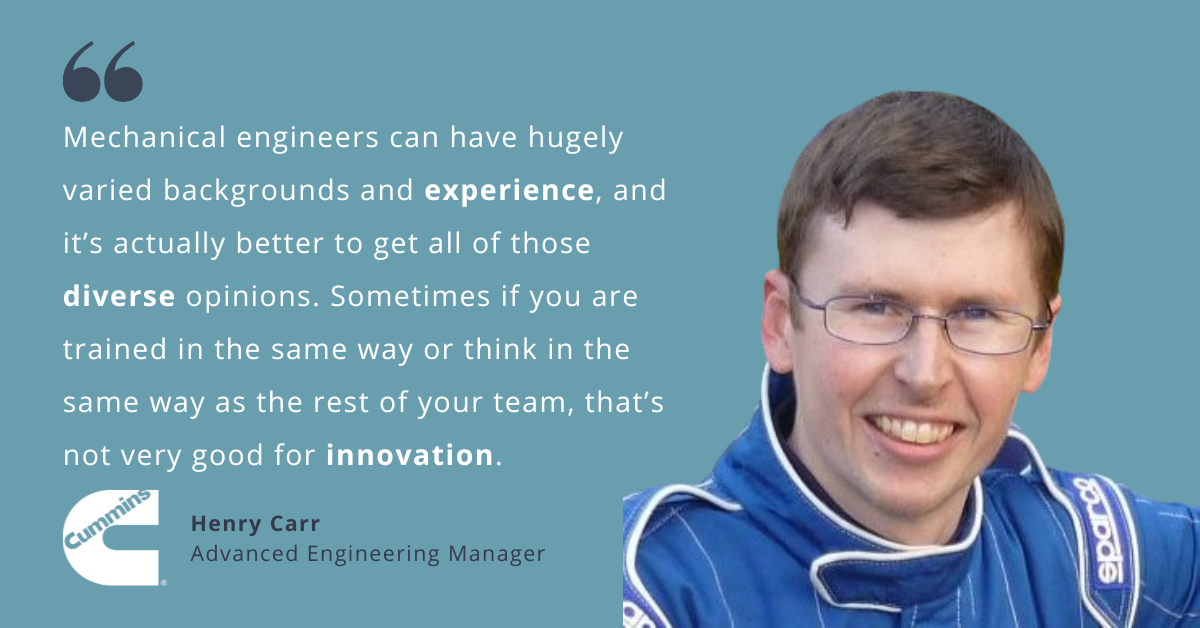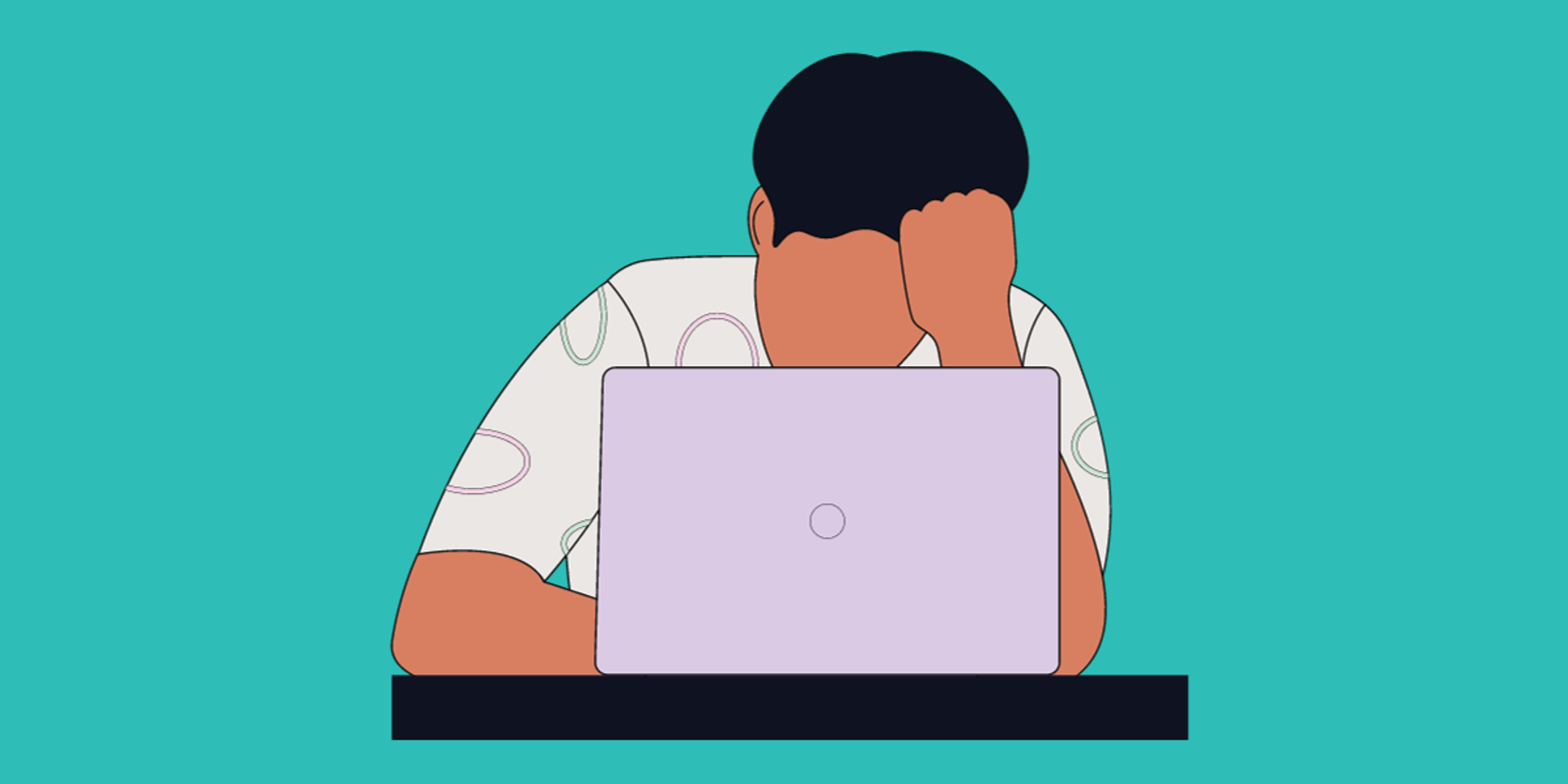The first time in his multi-decade engineering career that Henry Carr felt like an outsider was during a Society of Women Engineers event a few years ago.
“Walking into a place where suddenly you are the minority was really powerful, because it feels very different,” he says, reflecting on the experience. “Even if I knew 60% of the people in the room, it was the first professional meeting I had where I walked in and didn’t see people who looked like me.”
Henry had been committed to building an inclusive engineering environment before attending that event, but having a first-hand glimpse into the everyday experiences of women, people of color, and other underrepresented minorities in engineering made him double down.
“I've kind of been through a journey of ‘mechanical engineers look like this – with similar interests, education, etc’ because that's what I grew up with and what I was used to,” says Henry. “But in reality mechanical engineers can have hugely varied backgrounds and experience, and it’s actually better to get all of those diverse opinions. Sometimes if you are trained in the same way or think in the same way as the rest of your team, that’s not very good for innovation.”
As an Advanced Engineering Manager at international power company Cummins Inc., Henry’s responsibilities include technical work and more traditional people leadership. In both aspects of his job, he looks for ways to build more paths for people of different backgrounds to find success at Cummins and in the engineering field writ large.
We sat down to talk about Henry’s professional and DEI journey — and to hear what advice he has for other leaders interested in running their own version of the multi-year accessibility audit he recently finished for Cummins.
“Do it Where You Can”
Henry knew he was interested in mechanical engineering from a young age.
“My natural interest was in making things, and that’s still what I do in my free time now,” he says.
Henry built his own car at 20, then sold it and built a faster one; he then got involved in racing teams and electric vehicle competitions, and now works with university students as an advisor on such projects.
“Globally, we talk a lot about diversity and inclusion, but too few people really do anything. I saw an opportunity where I could do something on this project,” he says, referencing the Green Power team he helps out with at his local schools. “I said, ‘Let’s aim for a 50/50 gender split.’ The gender split is so inequitable [in mechanical engineering and racing] when you get to university, and part of that is because we’re not highlighting opportunities and because women don’t see their peers or people they aspire to be in these roles.”
The challenge worked, and a few weeks later, the school’s race team was half men and half women.
Henry took a simple lesson from that experience: “Do it where you can. Look towards equity and inclusion wherever you can. It’s not a case of, ‘We can’t’; it’s a case of, ‘How much do we want it?’”
Believing that he and other leaders can make an impact with simple changes is a core value of Henry’s, and a big part of what shapes his approach to DEI at work. “There’s a saying that you can’t boil the ocean. Well, actually, I think you probably can, with enough effort,” he says.
How Engineering Frameworks Help with DEI Goals
Henry was driven to study engineering to better understand how things work. His first job out of university had him running endurance tests on internal combustion engines.
“We wanted to know what happens when things go very wrong,” he says. “I found it really interesting, seeing how things fail and then trying to work backwards — being a bit of a detective and figuring out how something failed, what happened first.”
That same curiosity and logical rigor is why he appreciates having a diverse team, stacked with employees of different genders, countries of origin, academic backgrounds, native languages, and ways of learning, working, and communicating.
“There's never just one answer. That’s partly where diversity comes in: if you all think the same, then you miss things,” he says.
And there have been no shortage of answers to work through at Cummins. The fact that Henry has spent 18 years there is a surprise even to himself.
“I genuinely thought after a few years of experience, maybe my interest would’ve gone elsewhere, but it really hasn’t,” he explains. “Cummins is such a big organization, and you’re free to move between business units with their full support. They seem genuinely interested in your career and helping people be the best they can be, to reach their potential.”
That doesn’t mean everyone is on a track to manage people, Henry adds, noting that he enjoys the fact that his job is a mix of technical projects and people management. It does mean that everyone is encouraged to pursue the growth path that makes the most sense to them, and is supported with ample training resources along the way.
“Cummins does a good job of supporting every type of learning, and not leaving behind people who learn differently,” he says. “And they’re always interested in knowing what they can do better and how they can make sure everyone is happy and comfortable.”
Recently, Cummins’ engineering DEI initiative LIFT — which stands for “leading inclusion for technical” — prioritized looking at how they could make their division more inclusive.
“The goal was to ask, ‘How can we come up with a way of assessing our technical centers for inclusion and diversity?’ A way to look at, ‘This is how well we are doing, and this is how we can improve,’” says Henry. Two years of investigation later, he shares what he learned.
4 Learnings from Running an Accessibility Audit
Henry and his team looked at seven different aspects of diversity — from physical ability to sexual orientation to religion and more — and how Cummins was or was not set up to support it.
“What’s best practice for one person doesn’t translate to another,” he says. “It was important that we had a diverse pool of people on the team.”
They looked at everything from recruiting to retention to physical space, says Henry. “The output was a health checklist of where we can improve—and identifying the priority areas.” Those included:
- Updating 70-year-old sites to add elevators to better accommodate people with disabilities or temporary health challenges
- Rewriting job descriptions to strip out gendered language and unnecessary requirements
- Adding more virtual and hybrid work options to allow people to work from where they are most comfortable
And he has tips for other leaders looking to do the same:
- “Expect the tough questions, and answer them. They’re the ones that will help you do better and develop more.”
- “Don’t expect to be perfect. It’s important to be really self-critical. A perfect score probably means something's wrong.”
- “Don’t consult the same people. We tried to get a very diverse team to be involved in creating that audit, to make sure we have all those viewpoints. And even that is limited by who we already have working here.”
- Remember that diversity is “not a priority, it’s a value. If you treat it as a priority, it might never get done. Whereas if it's a value, it's just part of what you do.”
Interested in learning more about working at Cummins? Check out their open roles!




